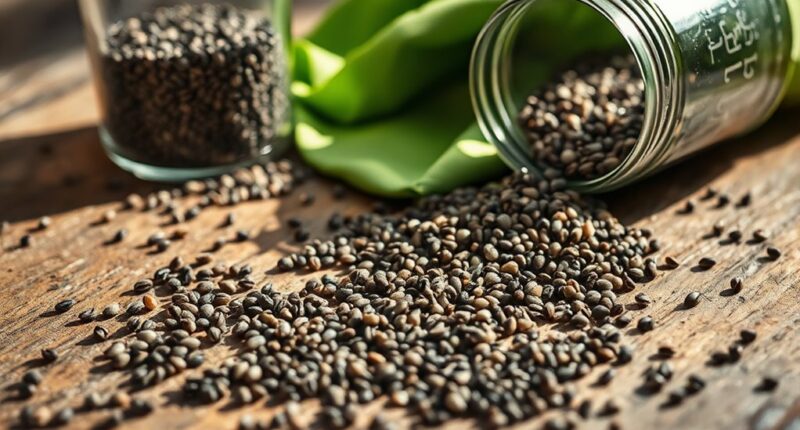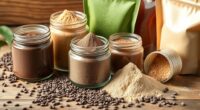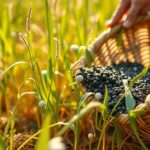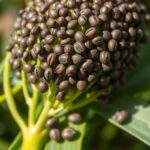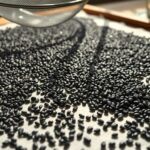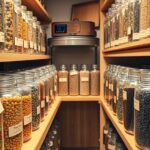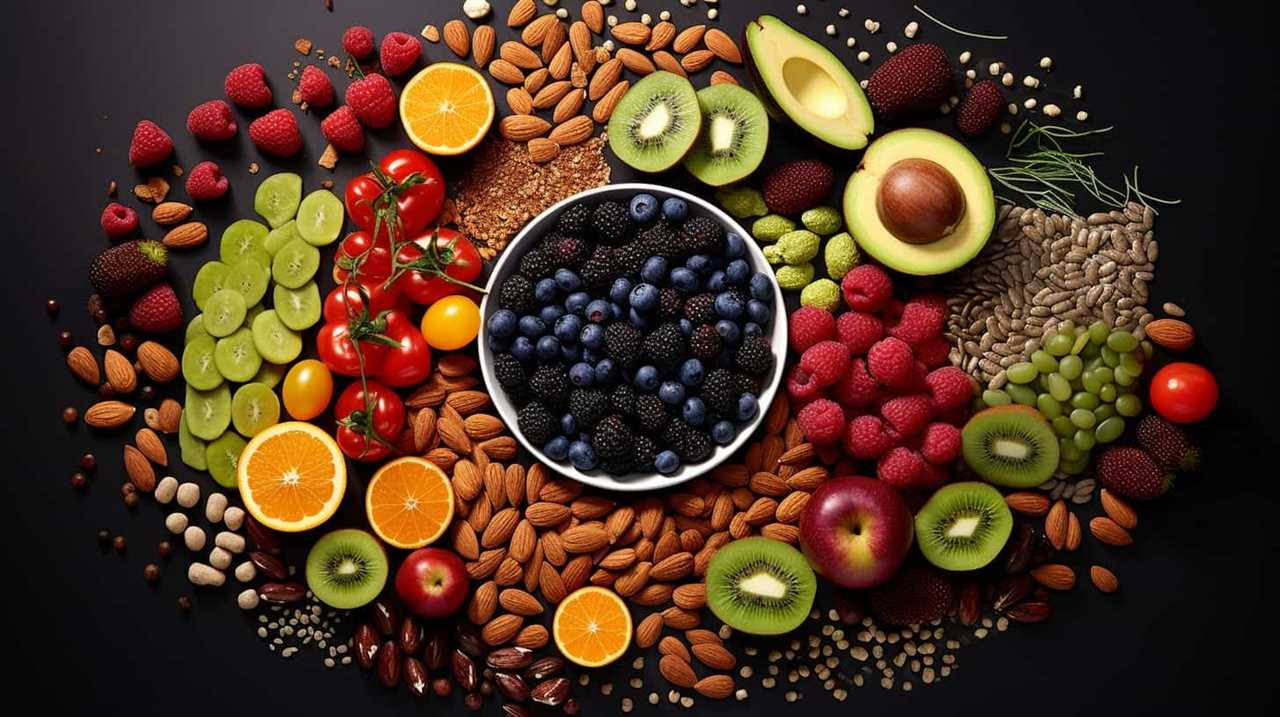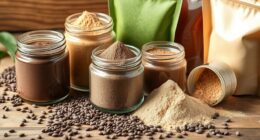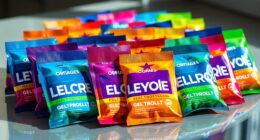To save chia seeds for replanting next season, wait until the seed heads turn tan or light brown, signaling maturity. Gently harvest the heads and extract the tiny seeds by rubbing or crushing them over a screen. Clean and dry the seeds thoroughly, then store them in airtight containers in a cool, dark, dry place to maintain viability. Proper storage tips will help you preserve seed freshness and success for future planting projects. Keep exploring for detailed techniques and care tips.
Key Takeaways
- Harvest mature seed heads when they turn tan or light brown to ensure seed viability.
- Gently extract seeds by crushing or rubbing seed heads over a mesh screen to prevent seed loss.
- Thoroughly dry seeds on a paper towel before storage to prevent mold and preserve germination quality.
- Store seeds in airtight containers in a cool, dark, and dry environment to maintain seed viability.
- Label stored seeds with harvest date and consider refrigeration or freezing for extended replanting success.

Saving chia seeds for replanting next season is a simple way to guarantee a steady supply of these nutritious plants without constantly purchasing new seeds. To do this effectively, you need to focus on proper seed harvesting and storage techniques. The process begins with knowing when to harvest your chia seeds. Typically, you’ll notice seed heads turning a tan or light brown color, indicating that they’re mature and ready for collection. Avoid waiting too long, as seeds may fall off naturally or get damaged. When harvesting, gently cut the seed heads from the plant and place them in a paper bag or a container that allows for air circulation to prevent moisture buildup.
Once you’ve collected the seed heads, it’s time to extract the seeds. To do this, you can gently rub or crush the seed heads over a clean surface or a fine mesh screen. This helps dislodge the tiny chia seeds without losing too many in the process. Be careful to separate the seeds from the chaff, as leaving debris can cause issues during storage. After harvesting, cleaning the seeds is an essential step. Spread them out on a clean, dry towel and allow them to air dry thoroughly. Ensuring your seeds are completely dry is imperative to prevent mold and spoilage during storage.
Proper storage techniques are essential for maintaining seed viability. Store your chia seeds in an airtight container, such as a glass jar or a sealed plastic bag, in a cool, dark, and dry location. Light and humidity can degrade the seeds over time, reducing their germination rates. Label the container with the harvest date so you can keep track of their age and quality. If you want to extend the seeds’ shelf life, consider storing them in the refrigerator or freezer. Just make sure the container remains airtight to avoid moisture exposure, which can lead to mold or seed deterioration.
Frequently Asked Questions
Can Chia Seeds Be Stored Without Drying First?
You can store chia seeds without drying them first, but it’s not ideal for seed viability. Seeds that aren’t properly dried might mold or spoil faster, reducing their ability to sprout later. To maximize seed viability, it’s best to go through the seed drying process before storage. Proper drying guarantees the seeds stay fresh longer, maintain their germination rate, and remain healthy for replanting when the next season arrives.
What’s the Best Container for Storing Chia Seeds Long-Term?
Think of your chia seeds as tiny treasures, needing a sturdy chest to protect their future potential. For seed preservation, choose an airtight, opaque container made of glass or BPA-free plastic; these materials guarantee durability and keep light and moisture out. Proper container choice prevents spoilage, maintains freshness, and safeguards your seeds for long-term use, much like a vault preserves priceless valuables. Your seeds deserve the best container to thrive again next season.
How Long Can Chia Seeds Be Stored Before Losing Viability?
Chia seeds typically remain viable for about 2 to 4 years when stored properly, but seed viability can decline over time. To maximize storage duration, keep them in an airtight container in a cool, dark place. If stored correctly, you’ll prevent exposure to moisture and light, which can reduce their germination ability. Regularly check for off odors or mold to ensure your chia seeds stay fresh and viable for planting later.
Should Chia Seeds Be Refrigerated After Harvesting?
You should refrigerate chia seeds after harvesting to help preserve seed viability and seed germination potential. Keeping them cool slows down the aging process and prevents moisture damage, which can compromise seed quality. Proper refrigeration extends seed preservation, ensuring your chia seeds remain viable for future planting. Store them in an airtight container in the refrigerator to maintain freshness and maximize their longevity for successful replanting next season.
Are There Specific Signs That Indicate Seeds Are No Longer Viable?
Think of seed viability like a ticking clock—once it stops, germination indicators fade. You’ll notice seeds that are no longer viable if they’re dry, shriveled, or have lost their shine. When you test germination by placing a few on damp paper, no sprout appears after a week. These signs show it’s time to find fresh seeds, as old ones won’t sprout, ending your planting hopes.
Conclusion
Now that you know how to save chia seeds for next season, you’re all set to grow more plants effortlessly. Did you know that chia seeds can produce up to 15,000 new plants from just one mature plant? That’s a huge potential for your garden! By saving seeds properly, you’ll maximize your harvest and enjoy fresh chia all year round. Start saving today and watch your garden thrive with each passing season.
